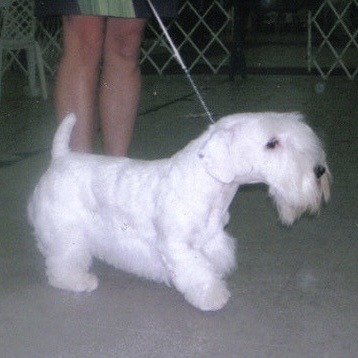Finally Rained Enough To Get Some Fungi! Currently Waiting On Inaturalist For The ID




Finally rained enough to get some fungi! Currently waiting on inaturalist for the ID
bonus fungus helpers:

More Posts from Misscounterfactual and Others






um … compilation
Rockets, Racecars, and the Physics of Going Fast

When our Space Launch System (SLS) rocket launches the Artemis missions to the Moon, it can have a top speed of more than six miles per second. Rockets and racecars are designed with speed in mind to accomplish their missions—but there’s more to speed than just engines and fuel. Learn more about the physics of going fast:

Take a look under the hood, so to speak, of our SLS mega Moon rocket and you’ll find that each of its four RS-25 engines have high-pressure turbopumps that generate a combined 94,400 horsepower per engine. All that horsepower creates more than 2 million pounds of thrust to help launch our four Artemis astronauts inside the Orion spacecraft beyond Earth orbit and onward to the Moon. How does that horsepower compare to a racecar? World champion racecars can generate more than 1,000 horsepower as they speed around the track.

As these vehicles start their engines, a series of special machinery is moving and grooving inside those engines. Turbo engines in racecars work at up to 15,000 rotations per minute, aka rpm. The turbopumps on the RS-25 engines rotate at a staggering 37,000 rpm. SLS’s RS-25 engines will burn for approximately eight minutes, while racecar engines generally run for 1 ½-3 hours during a race.

To use that power effectively, both rockets and racecars are designed to slice through the air as efficiently as possible.
While rockets want to eliminate as much drag as possible, racecars carefully use the air they’re slicing through to keep them pinned to the track and speed around corners faster. This phenomenon is called downforce.

Steering these mighty machines is a delicate process that involves complex mechanics.
Most racecars use a rack-and-pinion system to convert the turn of a steering wheel to precisely point the front tires in the right direction. While SLS doesn’t have a steering wheel, its powerful engines and solid rocket boosters do have nozzles that gimbal, or move, to better direct the force of the thrust during launch and flight.

Racecar drivers and astronauts are laser focused, keeping their sights set on the destination. Pit crews and launch control teams both analyze data from numerous sensors and computers to guide them to the finish line. In the case of our mighty SLS rocket, its 212-foot-tall core stage has nearly 1,000 sensors to help fly, track, and guide the rocket on the right trajectory and at the right speed. That same data is relayed to launch teams on the ground in real time. Like SLS, world-champion racecars use hundreds of sensors to help drivers and teams manage the race and perform at peak levels.

Knowing how to best use, manage, and battle the physics of going fast, is critical in that final lap. You can learn more about rockets and racecars here.
Make sure to follow us on Tumblr for your regular dose of space!
True story. My author/journalist/landlady took a trip to the States, met up with my college student friend to be shown the US college student life, and then pushed her into putting her credit card details into her Uber app.
Then over the course of the remainder of her trip she used my friend’s card to pay for her Uber trips until the money ran out.
The kicker to this story is that she wants 10k in upfront heating gas costs for the year because of “the war”.
Why are rich people so bad at money?

source
Celebrate Earth Day with NASA

"We came all this way to explore the Moon, and the most important thing is that we discovered the Earth." - Apollo 8 astronaut Bill Anders
On Dec. 24, 1968, Anders snapped this iconic photo of "Earthrise" during the historic Apollo 8 mission. As he and fellow astronauts Frank Borman and Jim Lovell became the first humans to orbit the Moon, they witnessed Earth rising over the Moon's horizon. The image helped spark the first #EarthDay on April 22, 1970.
Anders sat down with Dr. Kate Calvin, our chief scientist and senior climate advisor, to chat about the photo, and NASA’s role in studying our home.
Make sure to follow us on Tumblr for your regular dose of space!

Moonbound: One Year Since Artemis I
On this day last year, the Artemis I rocket and spacecraft lit up the sky and embarked on the revolutionary mission to the Moon and back. The first integrated flight test of the rocket and spacecraft continued for 25.5 days, validating NASA’s deep exploration systems and setting the stage for humanity’s return to the lunar surface.

On Nov. 16, 2022, the Space Launch System (SLS) rocket met or exceeded all expectations during its debut launch on Artemis I. The twin solid rocket booster motors responsible for producing more than 7 million pounds of thrust at liftoff reached their performance target, helping SLS and the Orion spacecraft reach a speed of about 4,000 mph in just over two minutes before the boosters separated.

Quite a few payloads caught a ride aboard the Orion spacecraft on the Artemis I mission: In addition to a number of small scientific satellites called CubeSats, a manikin named Commander Moonikin Campos sat in the commander’s seat. A Snoopy doll served as a zero-gravity indicator — something that floats inside the spacecraft to demonstrate microgravity.

During the mission, Orion performed two lunar flybys, coming within 80 miles of the lunar surface. At its farthest distance during the mission, Orion traveled nearly 270,000 miles from our home planet, more than 1,000 times farther than where the International Space Station orbits Earth. This surpassed the record for distance traveled by a spacecraft designed to carry humans, previously set during Apollo 13.

The Orion spacecraft arrived back home to planet Earth on Dec. 11, 2022. During re-entry, Orion endured temperatures about half as hot as the surface of the Sun at about 5,000 degrees Fahrenheit. Within about 20 minutes, Orion slowed from nearly 25,000 mph to about 20 mph for its parachute-assisted splashdown.

Recovery teams successfully retrieved the spacecraft and delivered it back to NASA’s Kennedy Space Center for de-servicing operations, which included removing the payloads (like Snoopy and Commander Moonikin Campos) and analyzing the heat shield.

With the Artemis I mission under our belt, we look ahead to Artemis II — our first crewed mission to the Moon in over 50 years. Four astronauts will fly around the Moon inside Orion, practicing piloting the spacecraft and validating the spacecraft’s life support systems. The Artemis II crew includes: NASA astronauts Reid Wiseman, Victor Glover, and Christina Koch, and CSA astronaut Jeremy Hansen.
As we look ahead to Artemis II, we build upon the incredible success of the Artemis I mission and recognize the hard work and achievements of the entire Artemis team. Go Artemis!
Make sure to follow us on Tumblr for your regular dose of space!


Say Hello to NGC 6441

Location: In the Scorpius constellation
Distance from Earth: About 44,000 light-years
Object type: Globular star cluster
Discovered by: James Dunlop in 1826
Each tiny point of light in this image is its own star - and there are more than a million of them! This stunning image captured by the Hubble Telescope depicts NGC 6441, a globular cluster that weighs about 1.6 million times the mass of our Sun. Globular clusters like NGC 6441 are groups of old stars held together by their mutual gravitational attraction, appearing nearly spherical in shape due to the density of stars that comprises them. This particular cluster is one of the most massive and luminous in our Milky Way Galaxy. It is also home to a planetary nebula and four pulsars (rotating neutron stars that emit beams of radiation at steady intervals, detected when the beams are aimed at Earth).
Read more information about NGC 6441 here.
Right now, the Hubble Space Telescope is delving into its #StarrySights campaign! Find more star cluster content and spectacular new images by following along on Hubble’s Twitter, Facebook, and Instagram.
Make sure to follow us on Tumblr for your regular dose of space!
-
 wickedwitchofthewesninski liked this · 2 years ago
wickedwitchofthewesninski liked this · 2 years ago -
 aloesthetic liked this · 2 years ago
aloesthetic liked this · 2 years ago -
 humanaprana liked this · 2 years ago
humanaprana liked this · 2 years ago -
 mushroomless liked this · 2 years ago
mushroomless liked this · 2 years ago -
 glossedeye liked this · 2 years ago
glossedeye liked this · 2 years ago -
 moth-queer reblogged this · 2 years ago
moth-queer reblogged this · 2 years ago -
 roseinabriarpatch liked this · 2 years ago
roseinabriarpatch liked this · 2 years ago -
 allpurposeramen liked this · 2 years ago
allpurposeramen liked this · 2 years ago -
 delayedemise liked this · 2 years ago
delayedemise liked this · 2 years ago -
 umokaysure0-0 liked this · 2 years ago
umokaysure0-0 liked this · 2 years ago -
 ofrimusic liked this · 2 years ago
ofrimusic liked this · 2 years ago -
 coneja420 liked this · 2 years ago
coneja420 liked this · 2 years ago -
 augustjamesiswriting liked this · 2 years ago
augustjamesiswriting liked this · 2 years ago -
 beefy-knees liked this · 2 years ago
beefy-knees liked this · 2 years ago -
 littleharvestmouse reblogged this · 2 years ago
littleharvestmouse reblogged this · 2 years ago -
 nexus-shitposts liked this · 2 years ago
nexus-shitposts liked this · 2 years ago -
 genderlessanxiousweirdo liked this · 2 years ago
genderlessanxiousweirdo liked this · 2 years ago -
 mbhfisme reblogged this · 2 years ago
mbhfisme reblogged this · 2 years ago -
 cory-trevorson reblogged this · 2 years ago
cory-trevorson reblogged this · 2 years ago -
 cory-trevorson liked this · 2 years ago
cory-trevorson liked this · 2 years ago -
 tacochippy reblogged this · 2 years ago
tacochippy reblogged this · 2 years ago -
 tacochippy liked this · 2 years ago
tacochippy liked this · 2 years ago -
 quidditygenesis liked this · 2 years ago
quidditygenesis liked this · 2 years ago -
 naturalblondekiller liked this · 2 years ago
naturalblondekiller liked this · 2 years ago -
 vesperdae liked this · 2 years ago
vesperdae liked this · 2 years ago -
 pretty-prinx liked this · 2 years ago
pretty-prinx liked this · 2 years ago -
 kpwix liked this · 2 years ago
kpwix liked this · 2 years ago -
 dykes-is-slugs liked this · 2 years ago
dykes-is-slugs liked this · 2 years ago -
 willissentient liked this · 2 years ago
willissentient liked this · 2 years ago -
 7cupcake719 liked this · 2 years ago
7cupcake719 liked this · 2 years ago -
 misscounterfactual reblogged this · 2 years ago
misscounterfactual reblogged this · 2 years ago -
 halomancer liked this · 2 years ago
halomancer liked this · 2 years ago -
 gay-debord liked this · 2 years ago
gay-debord liked this · 2 years ago -
 kimba161616 liked this · 2 years ago
kimba161616 liked this · 2 years ago -
 isapolvorita liked this · 2 years ago
isapolvorita liked this · 2 years ago -
 evolutionarilycognitivehat reblogged this · 2 years ago
evolutionarilycognitivehat reblogged this · 2 years ago -
 evolutionarilycognitivehat liked this · 2 years ago
evolutionarilycognitivehat liked this · 2 years ago -
 xevergreenx reblogged this · 2 years ago
xevergreenx reblogged this · 2 years ago -
 baananabee liked this · 2 years ago
baananabee liked this · 2 years ago -
 liberatedfromtheworld liked this · 2 years ago
liberatedfromtheworld liked this · 2 years ago -
 aldercaps reblogged this · 2 years ago
aldercaps reblogged this · 2 years ago -
 musicforawhile1 liked this · 2 years ago
musicforawhile1 liked this · 2 years ago -
 trimmerfingers liked this · 2 years ago
trimmerfingers liked this · 2 years ago -
 mbhfisme liked this · 2 years ago
mbhfisme liked this · 2 years ago -
 hildegard-von-bloggen liked this · 2 years ago
hildegard-von-bloggen liked this · 2 years ago -
 tom-at-the-farm liked this · 2 years ago
tom-at-the-farm liked this · 2 years ago -
 fish-on-the-sun reblogged this · 2 years ago
fish-on-the-sun reblogged this · 2 years ago -
 fish-on-the-sun liked this · 2 years ago
fish-on-the-sun liked this · 2 years ago -
 remasc reblogged this · 2 years ago
remasc reblogged this · 2 years ago



